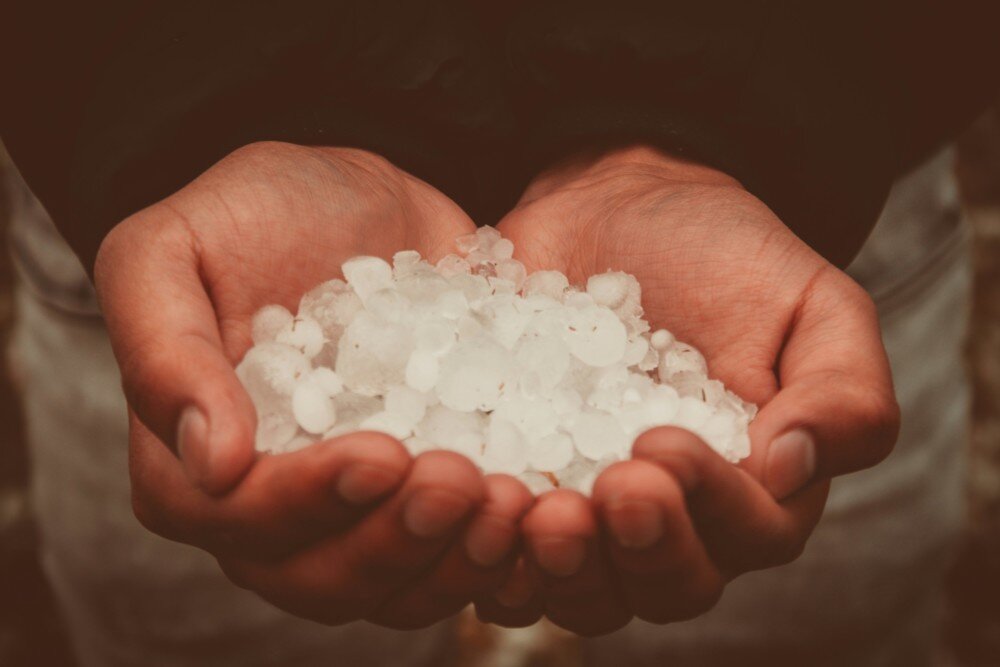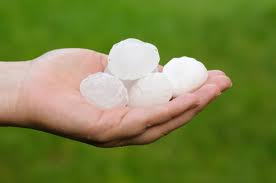Identifying Hail Damage
Hail forms when the Earth’s warm surface causes water to evaporate and rise. Eventually, the hail will reach high enough in the atmosphere that it freezes. Things exposed to the elements such as your home, cars, and anything else on your property can be affected by hail. Storms can be very destructive, and the hail damage can vary greatly depending on several factors.
What Effects How Bad Hail Damage Is
Wind During a hail storm, the wind can change direction and speed up and slow down. The quick change in wind conditions can affect the location and severity of damage.
Size and Density Hail can vary from the size of a dime to the size of a softball. Any hail over ¾ of an inch carried by wind can cause major damage to your roof, siding, doors, windows, and gutters.
Building Materials Different materials absorb hail impacts differently. Smaller hail causes roofing materials like asphalt shingles to become dented or bruised, while vinyl siding will appear cracked. Larger hail driven by wind can puncture your roof. The age and condition of your roof and siding can also affect how well the structure absorbs the damage.
Barriers The amount of damage your home receives can be affected by how your house is positioned around landscaping, fences, and adjacent homes. If trees and other tall structures surround your home you will experience less damage than a home that is free standing.

What Does Hail Damage Look Like?
When hail strikes your home it can cause significant damage such as granular loss and exposed matting. When matting is exposed to UV rays it will dry out, crack, and eventually let water into your home. Although it may take years to fully break down, if you avoid addressing hail damage your home will slowly experience extensive and costly damage. On a roof with asphalt shingles, you can identify hail damage by looking for:
- Significant Loss of Granules
- Impact Marks or Dents
- Black or Dark Colored Spots
- Bruised Shingles
- Tears or Splits in Shingles
Can You Repair Roof Damage?
Each roof faces unique challenges. If your home faced little to no damage you may be able to replace a shingle or two. An entire reroof may be necessary for extensive damage. The best way to evaluate your roof is to call a professional to get a detailed inspection listing all of the damages.
What Happens When You Ignore Roof Repairs?
Often, homeowners put their home’s exterior on the back burner. However, ignoring your roof can lead to extensive structural damage that will be more costly to fix than facing the problem early on. A broken shingle or ill-performing gutter can quickly turn into ice dams and leaky interiors. Wood rot, leaks, mold, and mildew build-up from damages can quickly spiral out of control. These problems are hard to detect until it’s almost too late. This is why it is important to be proactive about taking care of your home exterior. Being proactive can save you time, money, and effort.
Does Insurance Cover Hail Damage?
Often a homeowners insurance policy will include coverage for roof damage. Coverage will vary depending on where you live, who your provider is, the extent of the damage, and the details of your policy.
Many insurance companies require you to file a claim within a year of determining your home has encountered hail damage. To be proactive, make an appointment with your roofing contractor as soon as possible when you suspect roof damage caused by hail. An experienced contractor will be able to assist you in filing a claim with your insurance company and working with insurance adjusters.
Need Help?
If you need any help assessing your home for hail damage, D&G Roofing and Restoration is here for you. With almost 200 5-star Google Reviews, and an A+ Rating with the BBB we are sure to provide you with quality roofing and excellent customer service.
Call now to schedule your free inspection.

